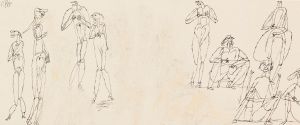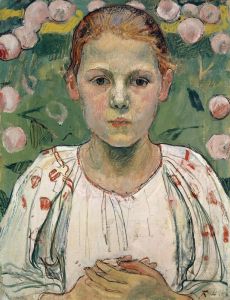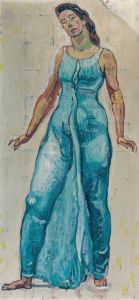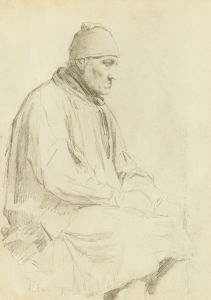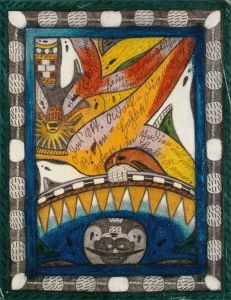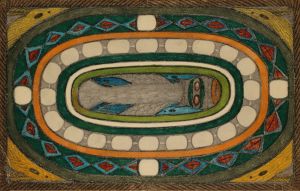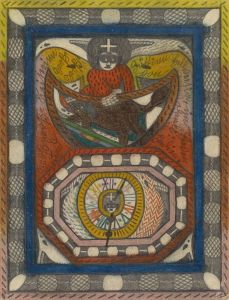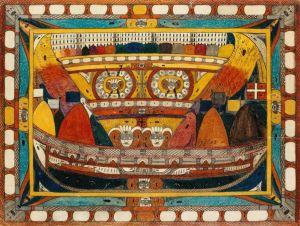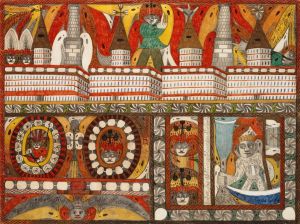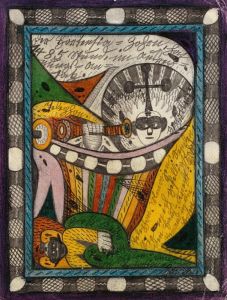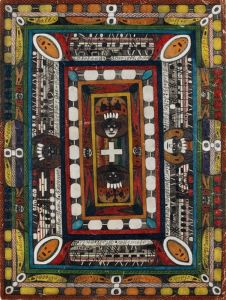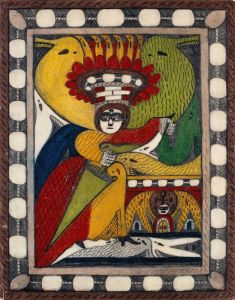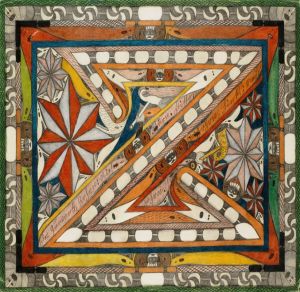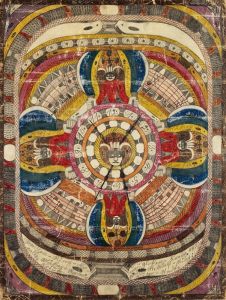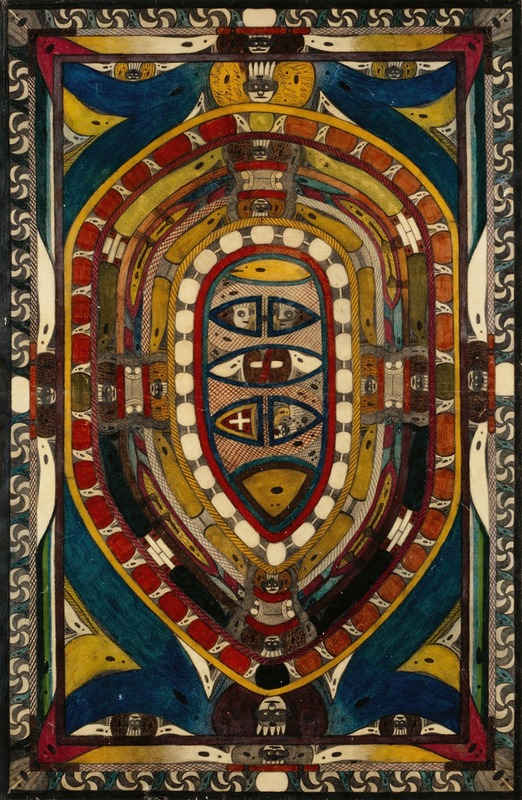
Noga=Ei; Ist Das allergrößte Dorf der gantzen Erde; Villerville
A hand-painted replica of Adolf Wölfli’s masterpiece Noga=Ei; Ist Das allergrößte Dorf der gantzen Erde; Villerville, meticulously crafted by professional artists to capture the true essence of the original. Each piece is created with museum-quality canvas and rare mineral pigments, carefully painted by experienced artists with delicate brushstrokes and rich, layered colors to perfectly recreate the texture of the original artwork. Unlike machine-printed reproductions, this hand-painted version brings the painting to life, infused with the artist’s emotions and skill in every stroke. Whether for personal collection or home decoration, it instantly elevates the artistic atmosphere of any space.
Adolf Wölfli (1864-1930) was a Swiss artist known for his intricate and highly detailed works, often created during his time in psychiatric institutions. One of his notable pieces is "Noga=Ei; Ist Das allergrößte Dorf der gantzen Erde; Villerville," which translates to "Noga=Ei; Is the Largest Village on Earth; Villerville." This artwork is part of Wölfli's extensive oeuvre, which he produced while confined at the Waldau Clinic in Bern, Switzerland.
Wölfli's life was marked by hardship and mental illness. He was institutionalized in 1895 after a series of criminal offenses and a diagnosis of schizophrenia. During his time at the Waldau Clinic, Wölfli began to create art as a form of therapy. His works are characterized by their complexity, featuring dense patterns, fantastical landscapes, and elaborate narratives.
"Noga=Ei; Ist Das allergrößte Dorf der gantzen Erde; Villerville" is a prime example of Wölfli's unique style. The piece is a mixed-media work, combining drawing, writing, and musical notation. Wölfli often used colored pencils, crayons, and collage elements to create his pieces, resulting in vibrant and visually striking compositions.
The artwork depicts an imaginary village, which Wölfli describes as the largest on Earth. This fantastical setting is typical of Wölfli's work, as he often created elaborate, imaginary worlds that he populated with detailed maps, buildings, and inhabitants. His art was not just visual but also narrative, with each piece contributing to a larger, ongoing story that Wölfli developed over the years.
Wölfli's works are also notable for their incorporation of text and music. He often included written descriptions, poetry, and musical scores within his drawings, creating a multi-layered experience for the viewer. In "Noga=Ei; Ist Das allergrößte Dorf der gantzen Erde; Villerville," the text and musical elements are integral to the piece, providing context and depth to the visual imagery.
Adolf Wölfli's art gained recognition posthumously, with his works being celebrated as significant contributions to the Art Brut movement. Art Brut, or "raw art," refers to art created outside the boundaries of official culture, often by self-taught artists or those with mental illnesses. Wölfli's work is considered a quintessential example of this genre, showcasing the raw, unfiltered creativity that defines Art Brut.
Today, Wölfli's works are held in high regard and are part of major art collections worldwide. The Adolf Wölfli Foundation at the Museum of Fine Arts in Bern houses a significant collection of his works, preserving his legacy and making his art accessible to the public. "Noga=Ei; Ist Das allergrößte Dorf der gantzen Erde; Villerville" remains a testament to Wölfli's extraordinary imagination and artistic talent, offering a glimpse into the mind of one of the most unique artists of the 20th century.





